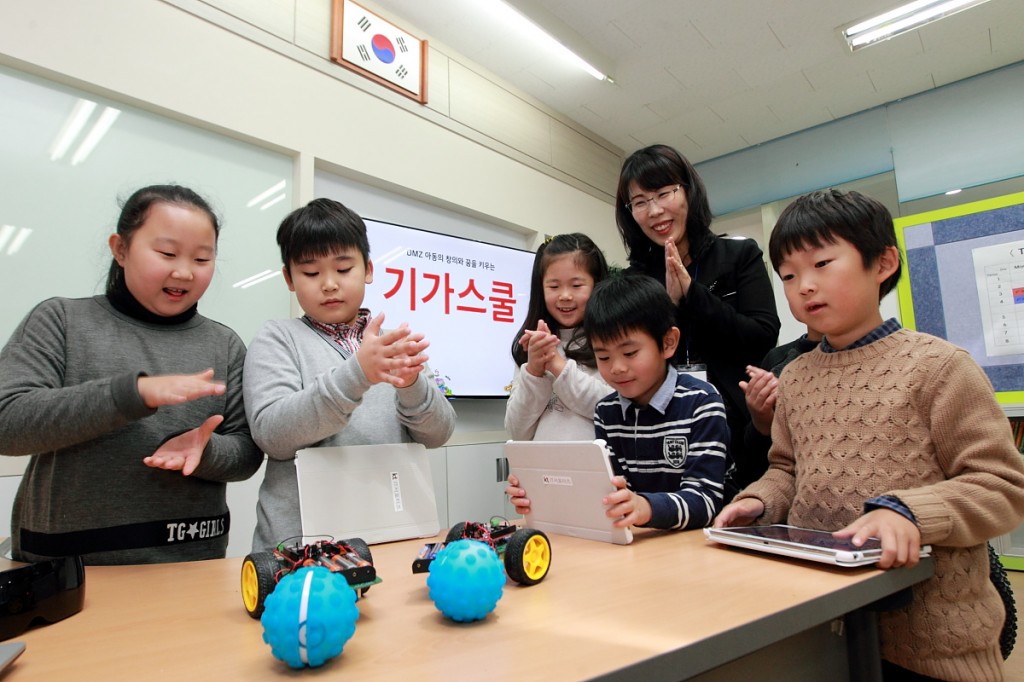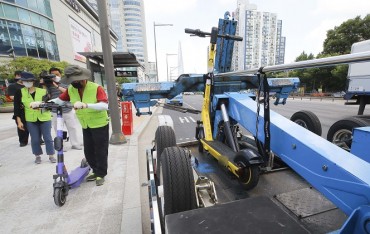
On November 26, KT opened a “GiGA School” at Daeseong-dong Elementary School, part of its bid to narrow the educational gap between remote areas and metropolitan cities with its fast internet connection. (image: KT)
SEOUL, Nov. 27 (Korea Bizwire) – Daeseong-dong village, located only 400 meters south of the heavily fortified Military Demarcation Line dividing North and South Korea, is the only village where civilians can reside within the de-militarized zone (DMZ) in South Korea.
According to the truce that ended the three-year long Korean War (1950-1953), two villages, one in the North and the other in the South, were set up inside the 2-kilometer buffer zone to symbolize the peace between the two Koreas. Daeseong-dong is the South Korean village, and home to some 200 residents.
Ironically, in spite of the fact that the village is surrounded by numerous soldiers guarding the DMZ, villagers are exempt from otherwise mandatory military service. In addition, they do not need to pay any taxes.
On the other hand, they face many restrictions, as they live under the close watch of the Allied Control Commission. To maintain resident rights, villagers have to spend at least 240 days in the village every year.
In another departure from the norm, the village is the only place in South Korea with a curfew. After 11pm, citizen displacements are forbidden without the consent of the commission, and without the accompaniment of Joint Security Area (JSA) soldiers. No one can enter the village without permission from the UN commander.
Due to the regulations and geographically remote location, the village’s IT infrastructure development has lagged behind that of other areas.
When the situation was brought to light, KT tried to work with the villagers and UN Command to build modern Internet infrastructure. After development plans were approved, the second largest mobile carrier in Korea finally established GiGA Internet, 10 times faster than regular Internet, at the only elementary school in the DMZ.
On November 26, KT opened a “GiGA School” at Daeseong-dong Elementary School, part of its bid to narrow the educational gap between remote areas and metropolitan cities with its fast internet connection. GiGA School, based on Giga class Internet infrastructure, offers various solutions related to education, health and security.

KT’s GiGA School will help the teachers and students interact using their tablets, and enable “smart education” using those devices. (image: KT)
The 30 students of the elementary school can now access GiGA UHD TV, tablet PCs and GiGA Paper, which can be used for reading, as well as sending written notes to smart devices. KT’s GiGA School will help the teachers and students interact using their tablets, and enable “smart education” using those devices.
An official at KT said,“We hope the students of Daeseong-dong Elementary School will be able to study using the best educational infrastructure to overcome the special geographical constraint. We will support the children, who symbolize the tragic division of the country, while at the same time wishing for them to grow as future leaders for reunification.”
By John Choi (johnchoi@koreabizwire.com)






